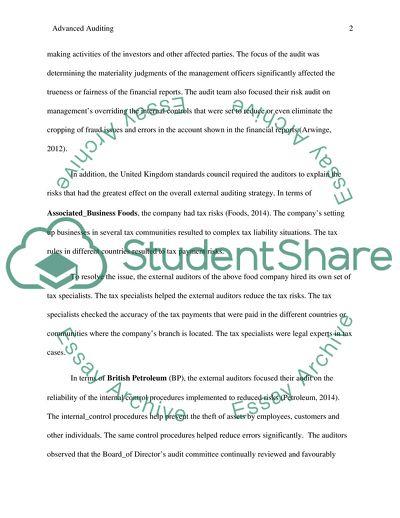Cite this document
(Advanced Auditing & Assurance Assignment Example | Topics and Well Written Essays - 1750 words, n.d.)
Advanced Auditing & Assurance Assignment Example | Topics and Well Written Essays - 1750 words. https://studentshare.org/finance-accounting/1869458-advanced-auditing-assurance
Advanced Auditing & Assurance Assignment Example | Topics and Well Written Essays - 1750 words. https://studentshare.org/finance-accounting/1869458-advanced-auditing-assurance
(Advanced Auditing & Assurance Assignment Example | Topics and Well Written Essays - 1750 Words)
Advanced Auditing & Assurance Assignment Example | Topics and Well Written Essays - 1750 Words. https://studentshare.org/finance-accounting/1869458-advanced-auditing-assurance.
Advanced Auditing & Assurance Assignment Example | Topics and Well Written Essays - 1750 Words. https://studentshare.org/finance-accounting/1869458-advanced-auditing-assurance.
“Advanced Auditing & Assurance Assignment Example | Topics and Well Written Essays - 1750 Words”. https://studentshare.org/finance-accounting/1869458-advanced-auditing-assurance.


